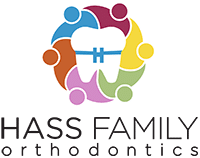At Hass Family Orthodontics, we treat a variety of orthodontic concerns beyond just crooked teeth and jaw misalignments. One of the more common issues we see, especially in children, is tongue thrust. This condition occurs when the tongue pushes forward against the teeth during swallowing, speaking, or even at rest. While it might seem harmless at first, tongue thrust can interfere with proper dental development and speech patterns over time.
Thankfully, we offer practical solutions to help correct this behavior, including the use of a tongue thrust appliance. If you’ve recently heard this term and are wondering what it means or how it works, you’re not alone. In this blog, we’ll walk you through what a tongue thrust appliance is, how it functions, and how our orthodontic services can help your child—or even yourself—achieve healthier oral habits and long-term results.
Understanding Tongue Thrust and Why It Matters
Tongue thrust, also known as orofacial muscular imbalance, is when the tongue repeatedly pushes against or between the teeth during functions like swallowing, speaking, or resting. This habit may begin in early childhood and, if left untreated, can persist into adolescence or adulthood.
So why is tongue thrust a problem? The constant pressure from the tongue can cause the front teeth to move out of alignment, often resulting in an open bite, where the front teeth don’t touch when the mouth is closed. It can also interfere with speech development, leading to issues like lisps or difficulty pronouncing certain sounds.
We’ve seen how frustrating this can be for both children and parents. Many kids with tongue thrust may struggle with self-confidence, especially if it begins to affect their smile or the way they speak. That’s why early intervention is key, and why we recommend a comprehensive orthodontic evaluation if you suspect your child is displaying signs of tongue thrust.
What is a Tongue Thrust Appliance?
A tongue thrust appliance is a small, fixed device that’s placed in the mouth, usually attached to the upper molars, to help discourage the tongue from pushing forward. It acts as a physical barrier that retrains the tongue to rest and function in a more natural position. The appliance doesn’t hurt, and although it may feel a bit odd at first, most kids adjust quickly.
There are different types of appliances depending on the severity and the patient’s specific needs. Some may include a small crib or rake design that rests near the roof of the mouth to prevent the tongue from thrusting forward. Others might be custom-built to address additional orthodontic concerns simultaneously.
At Hass Family Orthodontics, we customize every appliance for comfort and effectiveness. Our goal is not just to stop the tongue thrusting habit but to promote better overall oral posture and long-term orthodontic stability. We often use tongue thrust appliances in conjunction with other orthodontic treatments for the best results.
How the Appliance Helps Retrain the Tongue
When a tongue thrust appliance is in place, it physically blocks the tongue from pressing against the front teeth. Over time, this constant gentle redirection trains the tongue to stay in a more neutral position, against the roof of the mouth rather than behind or between the front teeth.
This retraining process can take several months, depending on the severity of the habit and how consistently the appliance is used. In most cases, the tongue naturally adjusts, and the improved positioning becomes a new habit. We also occasionally recommend myofunctional therapy alongside appliance treatment to strengthen the tongue and facial muscles for even better results.
Because the tongue plays such a central role in oral development, correcting this habit early can help prevent the need for more extensive orthodontic treatment later on. Many of our patients experience improved bite alignment, speech clarity, and overall dental health once the tongue thrust issue is resolved.
What to Expect During Treatment
Once we determine that a tongue thrust appliance is the right choice, we’ll take impressions of the patient’s mouth to design a custom fit. The appliance is then placed during a follow-up visit and will remain in place for several months. During this time, we’ll schedule regular check-ups to monitor progress and make any necessary adjustments.
It’s important to note that eating and speaking may feel a little different at first, but most kids adapt quickly. We provide clear guidance on how to care for the appliance and maintain good oral hygiene during treatment.
We also encourage a positive mindset, especially for younger patients. We’ve found that when children understand the “why” behind the appliance and how it helps them, they’re more likely to cooperate and feel proud of their progress. And of course, we’re always here to answer questions and provide support every step of the way.
Helping Your Child Develop a Healthier Smile
If your child has been diagnosed with tongue thrust or you’ve noticed symptoms like mouth breathing, an open bite, or speech difficulties, a tongue thrust appliance might be the solution. With early diagnosis and a personalized treatment plan, we can help prevent long-term complications and set your child up for lasting oral health.
At Hass Family Orthodontics, we’re here to support every patient with compassion, education, and expert care. Our orthodontic services are designed to guide children and families through every stage of treatment with confidence. If you’re concerned about tongue thrust or want to learn more about appliances, we’d love to talk.
Frequently Asked Questions About Tongue Thrust Appliances
How long does a tongue thrust appliance need to stay in?
Every patient is different, but most appliances stay in place for anywhere from six months to a year. The exact length of treatment depends on how quickly the tongue adapts to the new position and whether other orthodontic treatments are being used at the same time. We’ll monitor your progress closely during regular appointments.
Is a tongue thrust appliance painful?
No, the appliance itself doesn’t cause pain. It may feel a bit uncomfortable or strange for the first few days, especially when eating or speaking, but most patients adjust quickly. If there’s any soreness or irritation, we’re here to make necessary adjustments to ensure comfort.
At Hass Family Orthodontics, we specialize in comprehensive care for children, teens, and adults, offering modern solutions for orthodontic issues like tongue thrust and more. We’re proud to serve our community with personalized, compassionate treatment plans that support long-term oral health. If you’re ready to take the first step, contact us today to schedule a consultation.

